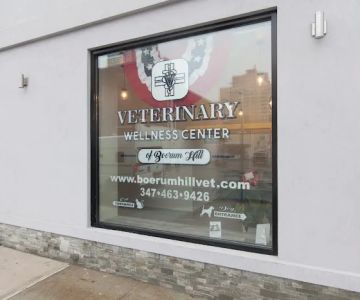How to Recognize and Address Dental Diseases in Pets
As a loving pet owner, one of the most crucial yet often overlooked aspects of pet care is their oral health. Just like us, pets can experience dental problems that, if left untreated, can lead to severe health issues. In this article, I will share my personal journey in understanding pet dental diseases, along with tips on recognizing signs, addressing issues, and keeping your furry friends' teeth healthy for years to come.
1. Understanding Dental Problems in Pets
Many pet owners don’t realize that dental diseases in pets are common and can be as serious as other health conditions. Dental disease can affect both cats and dogs, and in severe cases, it can lead to tooth loss, infections, and even damage to internal organs like the heart and kidneys. It's essential to recognize that good oral health is a cornerstone of your pet's overall well-being.
Over the years, I’ve learned that one of the main culprits behind dental issues in pets is plaque buildup, which eventually turns into tartar. When this tartar accumulates along the gumline, it can lead to gingivitis (inflammation of the gums) and periodontal disease. If left unchecked, periodontal disease can cause painful abscesses, tooth loss, and serious systemic infections. Understanding this early can prevent costly veterinary bills and, more importantly, keep your pet comfortable and healthy.
2. Signs of Dental Disease in Pets
Recognizing the signs of dental disease in pets is key to preventing serious complications. Pets can’t tell us when their teeth hurt, so it’s up to us to watch for certain behaviors. Here are some of the common signs I’ve found to be indicators of dental issues in both cats and dogs:
- Bad breath (halitosis): This is one of the most noticeable signs that something may be wrong with your pet’s teeth.
- Excessive drooling: If your pet starts drooling more than usual, it could indicate pain or discomfort in the mouth.
- Pawing at the mouth: When pets experience oral discomfort, they may try to alleviate it by pawing at their mouth or face.
- Difficulty eating or chewing: If your pet starts refusing food, having trouble eating, or only chewing on one side, it may be due to dental pain.
- Red or swollen gums: Gum inflammation is a common symptom of gingivitis or other dental problems.
- Loose or missing teeth: This is a clear sign of advanced dental disease that requires immediate veterinary attention.
My own dog, Max, started showing some of these signs, particularly the bad breath and difficulty chewing. After a thorough examination, our vet confirmed that he had periodontal disease, which was something I had not expected. This was a wake-up call that highlighted the importance of regular dental check-ups for pets.
3. The Importance of Regular Dental Check-ups
Just like regular check-ups for vaccinations or other health concerns, dental health check-ups are essential. I learned firsthand that routine dental exams help detect problems before they become major issues. A vet can spot early signs of tartar buildup, gingivitis, or other underlying conditions that might not be immediately obvious to pet owners. Many pet owners, including myself, tend to skip dental visits for their pets, but they are just as crucial as any other medical appointment.
During my pet's dental visit, the vet explained that professional cleanings could prevent the development of severe dental diseases. These cleanings typically involve scaling to remove tartar and polishing the teeth to keep plaque from accumulating. Depending on your pet’s age and health, these cleanings may need to be done regularly to maintain optimal oral hygiene.
4. Home Care Tips for Maintaining Your Pet’s Dental Health
While professional cleanings are essential, a lot of dental care can be done at home to maintain your pet’s oral health. After learning about the importance of dental hygiene, I started to implement some of these home care tips for Max:
- Brushing your pet’s teeth: Brushing your pet’s teeth is the best way to prevent plaque buildup. Use pet-friendly toothbrushes and toothpaste—human toothpaste can be harmful to pets. Start slowly, and with patience, your pet will get used to the process.
- Dental chews and toys: Chewing is a natural activity for pets, and using dental chews or toys designed for oral health can help remove plaque and tartar. Be sure to choose safe, vet-recommended products.
- Specialized pet food: Some pet food brands offer formulas designed to promote dental health. These foods can help reduce plaque buildup and support gum health.
- Regular vet visits: As mentioned earlier, regular visits to the vet for dental check-ups are crucial. It’s a good idea to ask your vet about dental products and care options specific to your pet's needs.
Since incorporating these habits, Max’s dental health has significantly improved. His breath smells fresher, and he no longer has difficulty chewing his food. While it does take some effort, the results are well worth it.
5. Professional Treatment for Severe Dental Problems
Unfortunately, even with the best at-home care, some pets still develop severe dental problems. In these cases, professional veterinary intervention is necessary. My friend’s cat, Felix, had a severe case of gingivitis that caused his gums to bleed and left him in a lot of pain. The vet recommended a dental cleaning and even had to extract a few of Felix's teeth to prevent further infection. While it was a tough decision, Felix’s recovery was swift, and he seemed much happier afterward.
Some common professional treatments include:
- Dental extractions: If a tooth is severely damaged or infected, it may need to be extracted to prevent pain and further complications.
- Antibiotics: For infections that affect the teeth or gums, vets may prescribe antibiotics to treat the underlying infection.
- Root canals: In some cases, a root canal may be necessary to save a tooth that is severely infected but still viable.
Don't hesitate to consult your vet if you notice signs of severe dental disease. It’s better to address the issue early to prevent more serious health consequences.
6. Final Thoughts
Recognizing and addressing dental diseases in pets is essential for maintaining their overall health and quality of life. By being proactive and learning how to spot signs of dental disease early, you can prevent many of the common issues that arise. Regular vet visits, good home care habits, and understanding when professional treatment is needed will help ensure that your pet's teeth stay healthy and their smile stays bright.
If you're looking for expert dental care for your pet, I highly recommend checking out Hidden Brook Veterinary for comprehensive and professional dental services tailored to your pet’s needs.












